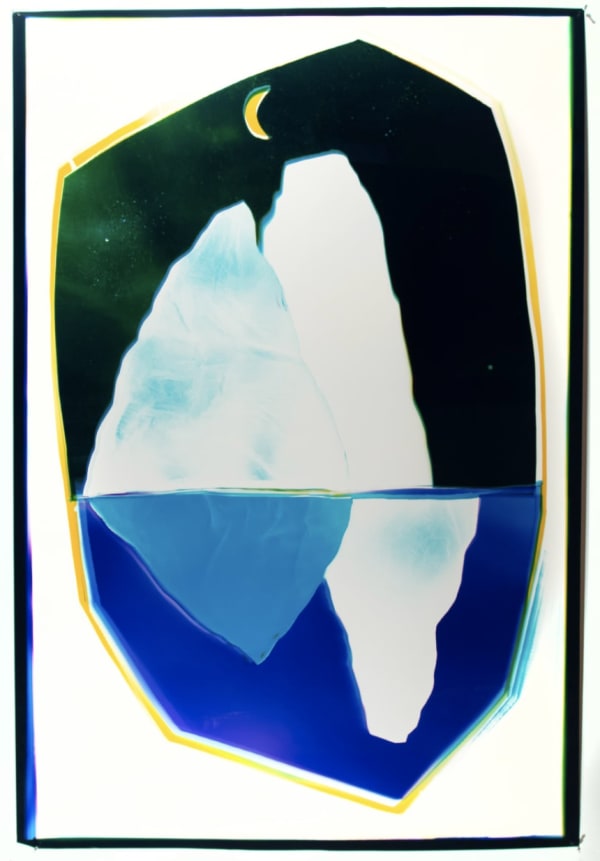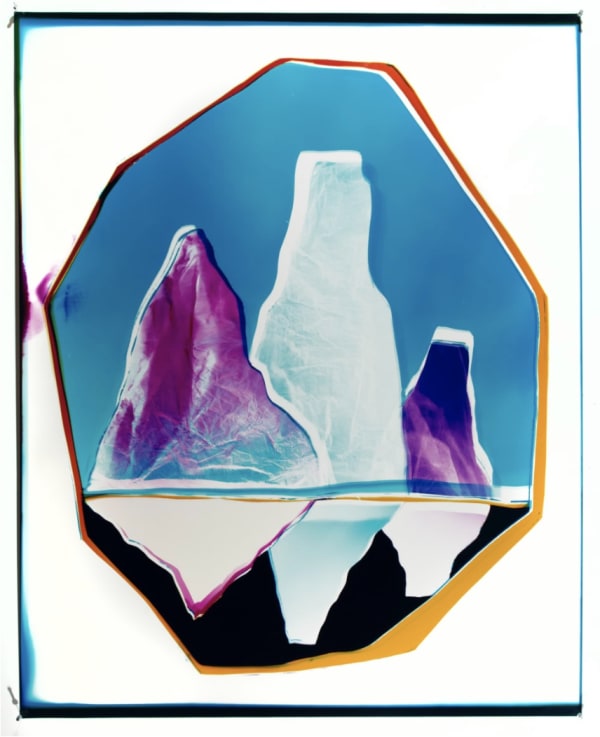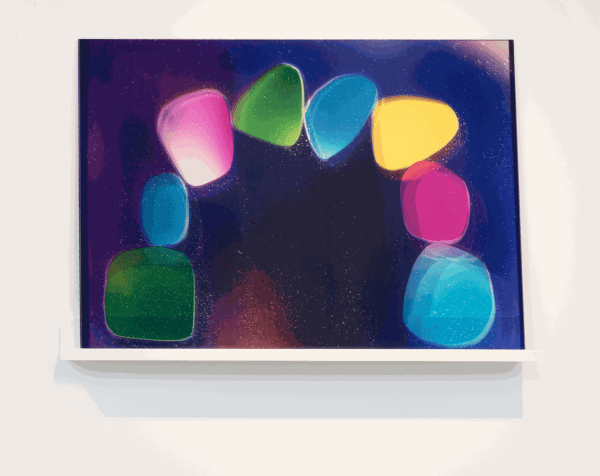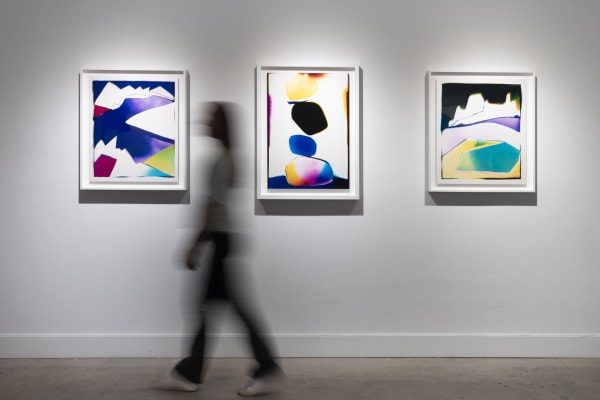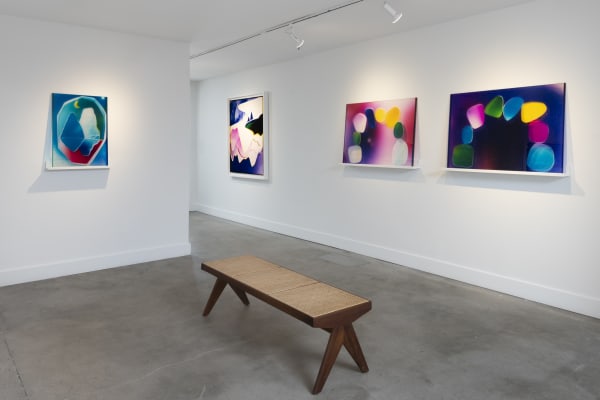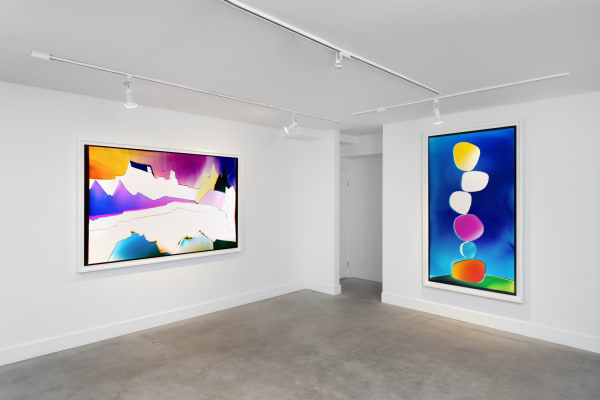Made in the Dark: Liz Nielsen
-
-
"I enter the darkroom and study the drawing and layers of what I am about to expose. I think about the order and the action plan and rehearse it inside my head. I close the door and keep the lights on... mentally preparing for the performance I'm about to do.
I turn off the lights and settle into the complete darkness. I head straight to my box of light-sensitive paper. I pull out a box cutter and open the blade. I cut the desired amount and roll out the 'paper' onto a table. I put all of my layers on top. I begin to strategically compose, move, and remove layers of transparent and opaque materials around the top of my paper. I let light in and block light out. Counting the wavelengths and mixing light, I keep the image and composition in my mind’s eye. After several minutes to several hours, depending on the piece, I finish the light painting. I roll up the piece and place it inside a light-tight tube. I head to the lab where I can dip this 'paper' through traditional color chemistry.
It is then that I see the image."
– Liz Nielsen
And the image sees her. Liz Nielsen’s works are created in the dark. Her compositions expand like layered, abstracted landscapes of time meant to be seen from a shifting point of view. Their interdimensional nature allows them to exist in more than one place simultaneously.
Nielsen’s light paintings reside at the threshold between photography and painting. They are from the present but also from the past. Much like when we see a landscape, we can read the geological layers of history that resulted in today’s appearance. Once Nielsen’s visual language is decoded, the skin of her photograms reveals the history that they contain.
While Nielsen works in the dark, there’s a moment of surrender. Much like in real life, we aim in a particular direction with an idea of what we might find, but results can be unpredictable. We learn how to anticipate and adjust, but there is always an element of the unknown that gets presented. Trusting the process is part of the result.
There is a poetic aspect in looking at Nielsen’s images that reveals metaphors for human connection. It is through the form of iceberg-like shapes, such as the ones found in Couple and Family Portrait, that we access a picture of what we show and what we hide. There is a vulnerable side to naming the relational dynamics that compose our emotional experience.
All of the things we juggle in life come to mind upon seeing Nielsen’s rocks stacked and balanced precariously atop one another. The stacks are life captured in that subtle space between balancing and falling apart, and they contain a non-static energy as if frozen in time. The way we interpret what happens next is left to our own point of view. These particular works invite us to honor those relationships that matter most – not only with others but also with ourselves.
-
-
SELECTED WORKS
-
Installations


